You’ve probably heard of the Three R’s in the past, but did you know the R’s don’t stop at three? As our knowledge of the environmental impact of consumption has changed, so have the steps we can take to reduce that impact. The R’s are building blocks of a larger concept called the Waste Prevention Hierarchy (imagined like an inverted pyramid). And we want you and all your friends to take part in this pyramid!
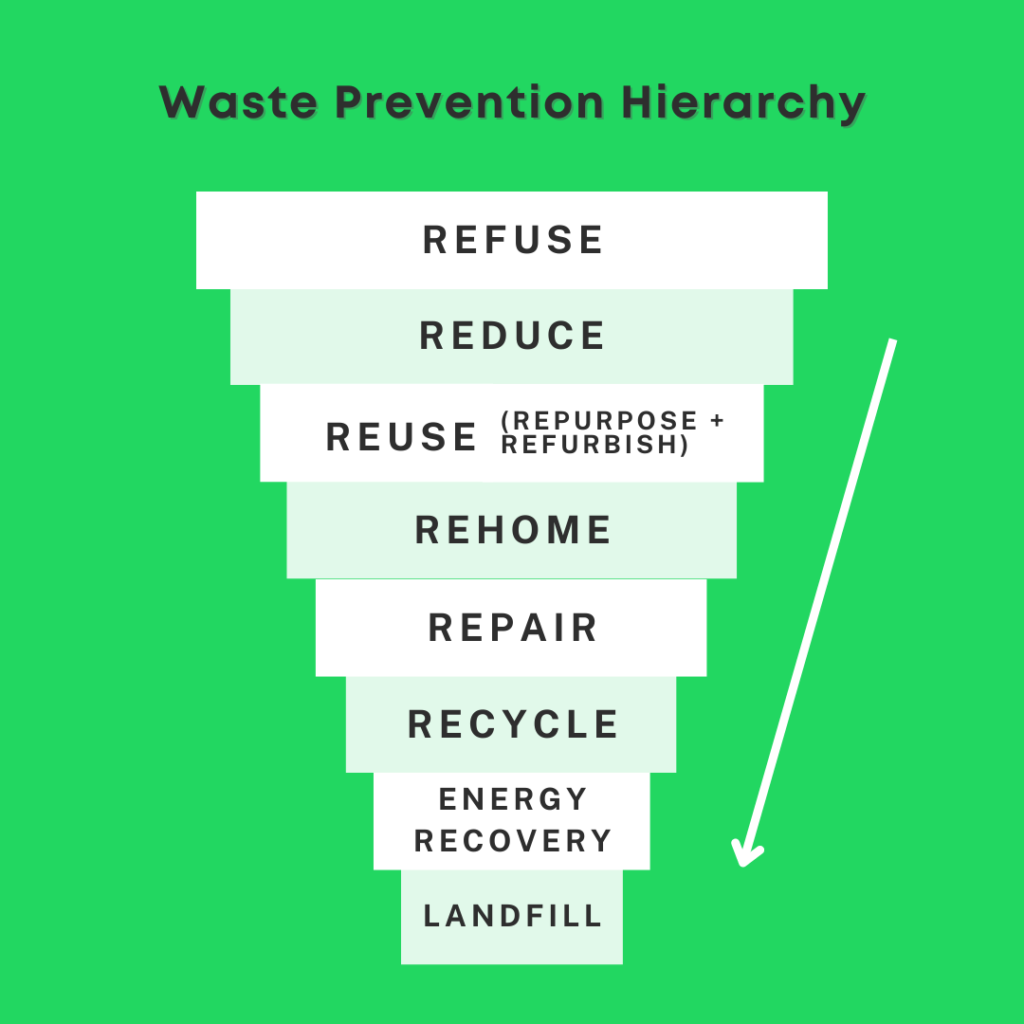
When it comes to being eco-friendly with your home products there are a number of R’s to consider before throwing them in a recycling or trash bin. Refusing, Reducing, Reusing (including Repurposing + Refurbishing), Rehoming, and Repairing are all important steps to take before Recycling. And when considered in that order, they can greatly decrease our waste. As pictured above, the idea is to prioritize each of the top levels of the pyramid first and then work down through each R. As you go down each level of the pyramid the intention is to have less and less material = less waste.
Although some concepts overlap, each R is important and should be kept in mind as we all work to live more sustainable lives. Also, these aren’t the only R’s to take note of, you can probably think of a few other waste related R’s as well!
Refuse
Refuse is the first R to consider. It is by far the most impactful thing you can do to help reduce your environmental footprint. By refusing a product, you can eliminate the need for any of the other R’s. Refuse is also the simplest of the R’s. All you have to do is say No! This step is especially important when it come to things like single use plastic or items of convenience, such as plastic coffee cups, or plastic cutlery. Since these items are meant to be single use, refusing them eliminates the resources needed to make them and keeps them out of the landfill.
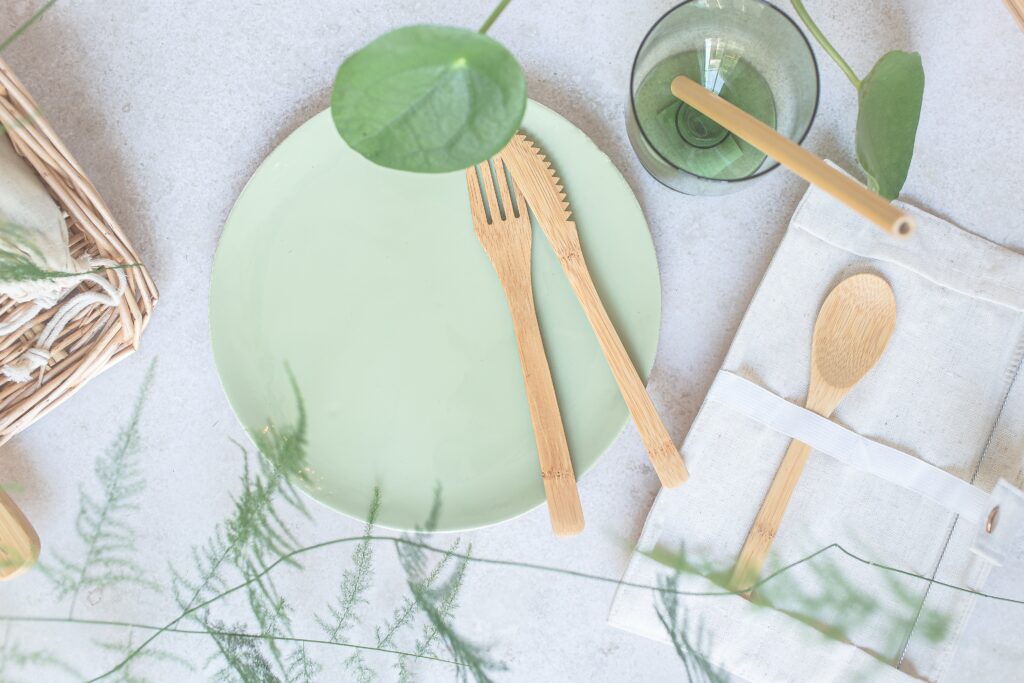
You can also apply this R to larger purchases. For example, a fancy new coffee machine or hair dryer may be tempting. But do you really need it if the one you have still works?
Reduce
Secondly, keep Reduce in mind. There are lots of ways to reduce in your day-to-day life. A good place to start is in the kitchen. Start by taking note of what food often isn’t eaten. Once you notice what gets left in your fridge, you can start to change your grocery shopping habits. Another way to reduce is in your closet. Before you go and buy new clothes, check and see if there is anything tucked away in your closet. You may find a hidden gem that you could wear instead. Overall, reducing will save you money and help conserve natural resources!
Reuse (Repurpose/ Refurbish)
An easy way to reuse is by switching out single use items with their reusable counterparts. For example, start carrying a reusable water bottle and cloth shopping bag, both of which can be reused over and over again. Check your local thrift store for a reusable water bottle for extra eco-points!
A couple other R’s that fit under the Reuse umbrella are Repurposing and Refurbishing. A lot of items that no longer serve their intended purpose can still be used for other things. Reusing products for a different purpose and/or refurbishing them gives them a second life and can save you money. Here’s a few ways to reuse items at home:
- Use the ceramic pot of an old slow cooker to grow herbs or flowers in
- A ratty t-shirt can be turned into cleaning rags
- Jam and tomato sauce jars can easily be used as cups
- Old frames can be painted a fresh color to match updated interior styling
- If your old coffee machine is beyond repair, the carafe can be reused as a watering can or vase
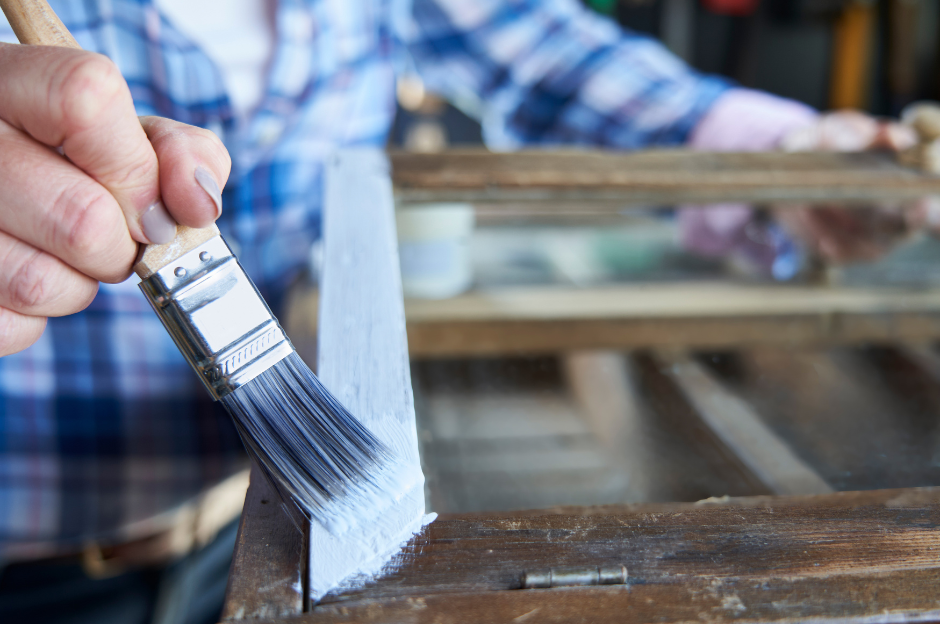
Rehome
If items are still usable, give them a second life and potentially make some money by rehoming them. For example, community sites like Craigslist, Freecycle, or Facebook Marketplace are great options to sell or list items for free on. Local Buy Nothing Groups are another eco-friendly option.
You can also donate functioning small appliances and power tools to a thrift store or tool library. For example, did you know that the Salvation Army accepts most household goods, furniture and clothes in useable condition. What is usable condition? If you would give it to a friend to use then chances are The Salvation Army will accept it.
As a plus, ElectroRecycle partners with many Salvation Army locations in B.C. to recycle non-working small appliances and power tools. So some Sally Ann locations accept both working and non-working items (check our website’s Location Finder to find our Salvation Army partner locations).
Repair
Taking care of and repairing your stuff can go a long way when it comes to increasing an items lifespan and keeping it out of the trash. Often things like your small appliances aren’t completely broken, they may just have a small problem that can be repaired. Before you go to recycle your appliance, take a look online for guides like those on IFixit.com or RepairClinic.com. There are also a wealth of YouTube videos from repair experts and manufacturers on how to maintain and repair your small appliances and power tools.
Is your appliance still under warranty? You may be able to get a replacement part for free! If it’s not under warranty, many manufacturers and online retailers also sell replacement parts such as a new hose for your vacuum, or a new blade for your blender.
No luck with your troubleshooting at home? Check if your community has any upcoming Repair Café‘s scheduled. Repair Cafes are community gatherings where visitors can get their broken household items fixed, free of charge, with the help of volunteer fixing experts.
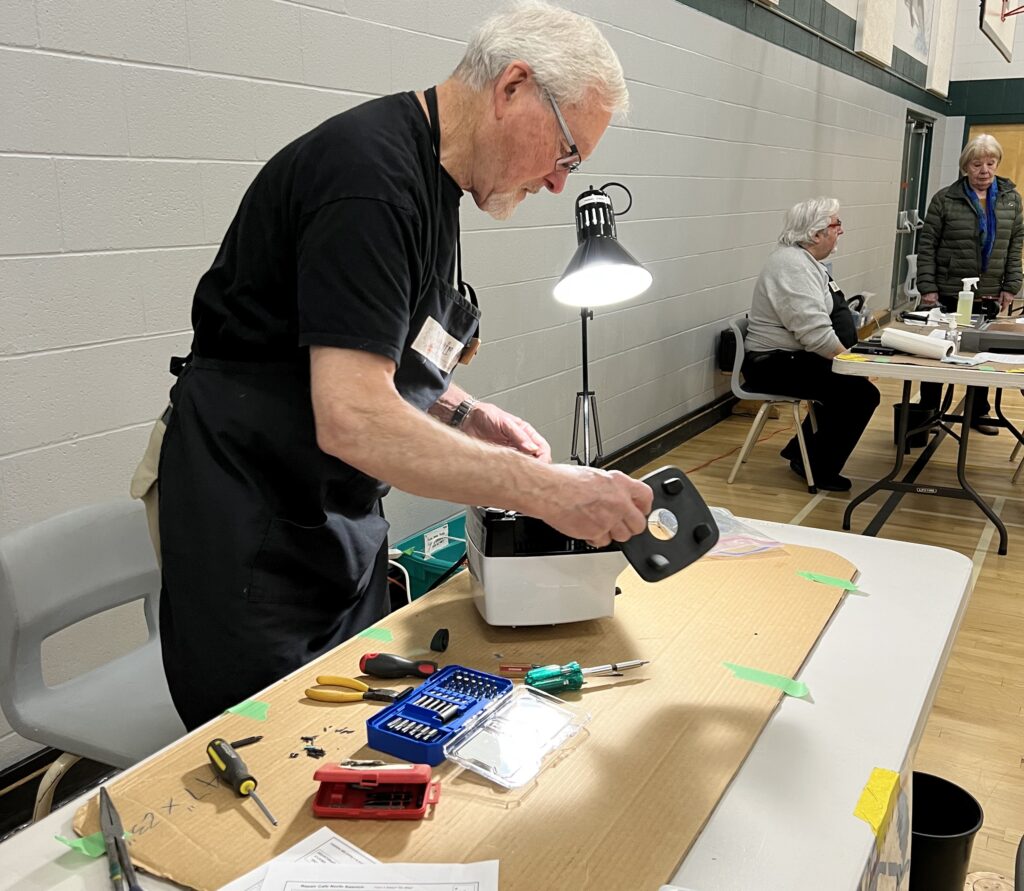
Recycle
If you’ve tried everything else, the next best eco-friendly step is to Recycle! Did you know our B.C. wide program accepts over 400 types of small appliances, power tools, and exercise machines for recycling? Use our Location Finder to discover the closest collection site in your community. Since 2011, our program has diverted 44 millions tonnes of small appliances and power tools from landfill!
Have a recycling question about items that aren’t part of our program? Visit the Recycling Council of British Columbia’s website to find the best way to recycle your product. Or give them a call at 604-RECYCLE.
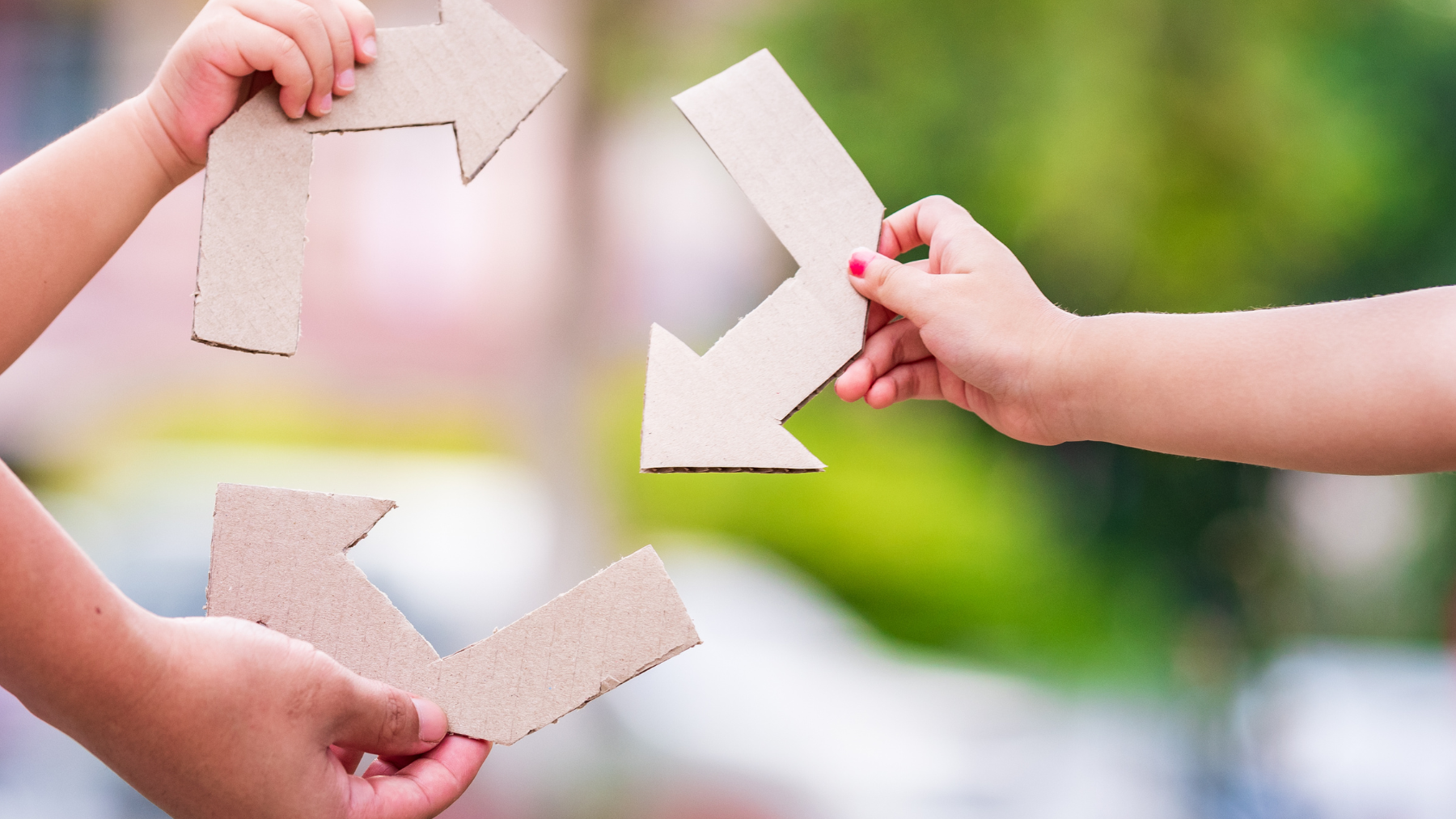
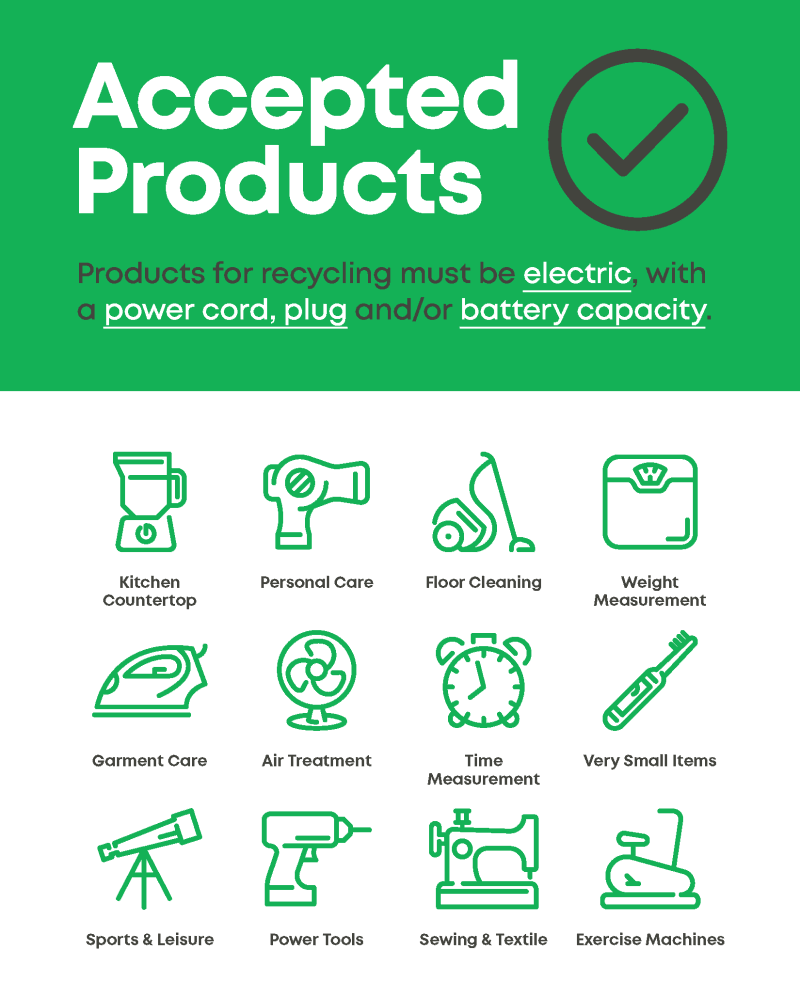



Comments